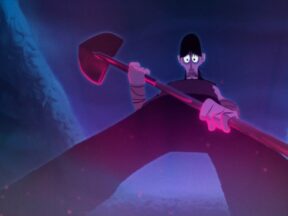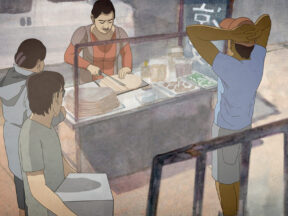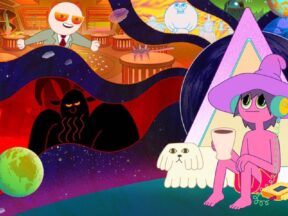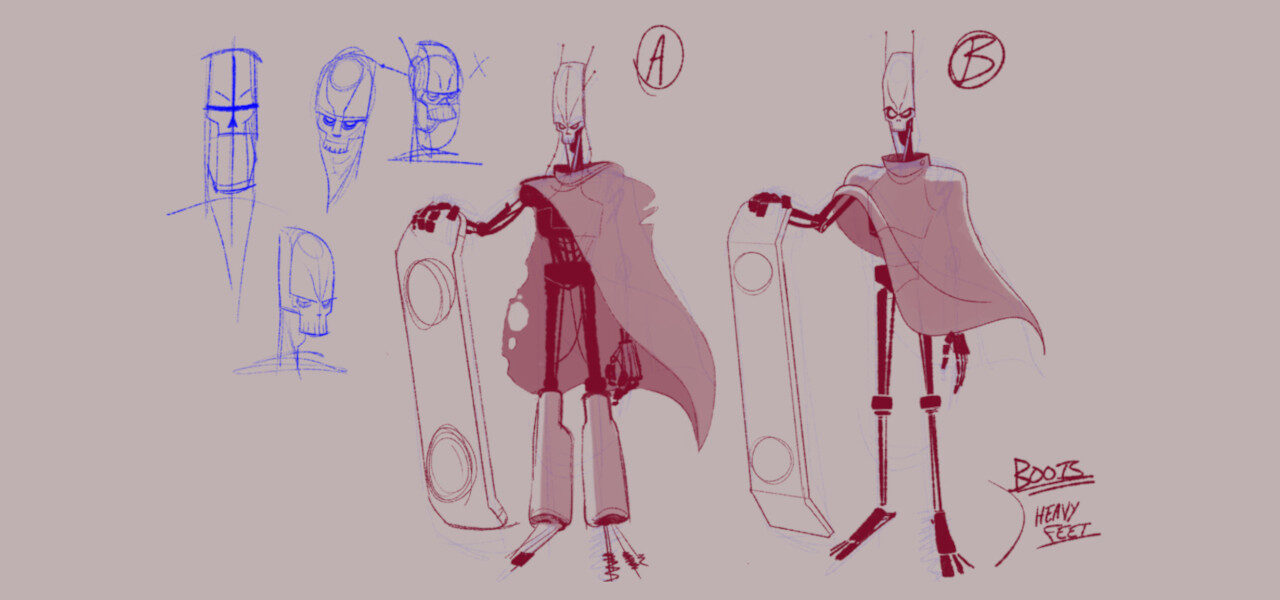
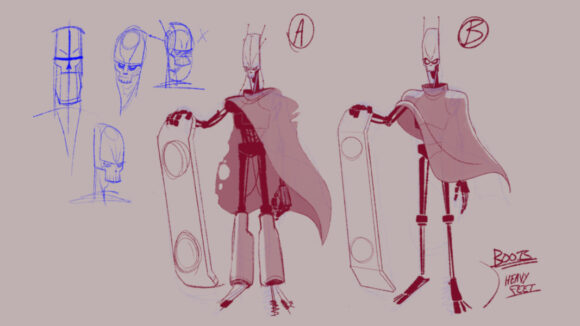
How Mercury Filmworks Used Harmony 22 To Create Its Cyberpunk Short ‘Duke’s Game’
To mark the release of Storyboard Pro 22 and Harmony 22, Toon Boom Animation commissioned the team at Mercury Filmworks to produce an original animated short using the latest versions of their software. Mercury Filmworks is widely known for its work on award-winning series such as Hilda and Kid Cosmic. Scenes from the new short, titled Duke’s Game, are featured in official tutorials for Harmony Premium and Storyboard Pro.
Interested in shredding through your next animated project? Toon Boom Animation interviewed Shane Plante and Collin Tsandilis (co-directors of Duke’s Game) to learn more about their creative vision and how they used cutout animation techniques to bring their characters to life.
How would you describe the style and tone of the short and what was your main source of inspiration?
Plante: For tone… I’m inspired by 1970s cinema. It’s always backlit, and they really play with the lenses. I was trying to find avenues to do that in the short, but in the tunnel, we were just trying to go actiony and light. And just as frantic as possible. We always knew the direction. We were going to start at the race.
Tsandilis: The main inspiration for the short was the movie The Running Man. It was all about someone who was in a situation that they didn’t want to be in. Mouse was placed in a position that she didn’t want to be in; she had to win this race to save her life. We didn’t necessarily want it to be scary, but we wanted it to have some sort of danger to it. And we wanted to show impact as well. Those were all factors when we were thinking of the short.
How would you describe the three main characters in Duke’s Game, both in terms of their physicality and personalities?
Tsandilis: Mouse is kind of an unwilling participant in this game. That’s something we talked about: “Is she someone that is partaking in this game willingly? Or is this something that she’s forced to do?” Originally, in early concepts of the story, we had her tied down to the platform and then eventually let go. But we found it just flowed better this way without those extra beats.
Plante: Going to Nitro, I love drawing villains. I only draw villains, ugly things, or stuff that’s hiding in the shadows. So Nitro came more naturally to me. I always knew what he was going to look like. And he’s just a real jerk out to show Mouse that the tunnels are his stomping ground, why he’s the champion, and why he never loses.
Tsandilis: It’s never clear if The Duke is actually a real person. For us, he was always just some sort of hologram AI character. He gives us a little bit of a sense of the world as well — what’s happening, what the game is, and what’s at stake for the players.
What was the approach to rigging these characters?
Tsandilis: In the past, we’ve always found that using lineless characters actually gives you a lot more freedom compared to having lined characters. Without those lines, we can place parts on top of each other. It’s much more forgiving and it’s a lot faster as well. We do have textured lines on the character but it’s only to show some details — the texture of the shirt and some of the interior lines that we needed for definition, like the chin line and the interior of the ear.
Those lines also have an animated texture line, using a new module in Harmony 22 that actually allows us to animate the line texture. It’s an effect that we used at Mercury Filmworks in the past, but that was more of a compositing process and didn’t really allow animators to have a lot of artistic control. It was always done by another department, so this new module gives us a lot of control.
Plante: For Mouse, her build is relatively small. We kept the builds very light so the short would get done on time. Her head is probably one of the lighter heads I’ve ever seen at Mercury Filmworks. Her mouth is definitely the lightest, as it’s more about mouth shapes rather than proper lip sync.
With The Duke, he was the one that we had Master Controllers on, but we didn’t go heavier than just the standard side-to-side, since he’s just a bouncing head. His mouth was such an organic thing that we left it out of the Master Controller.
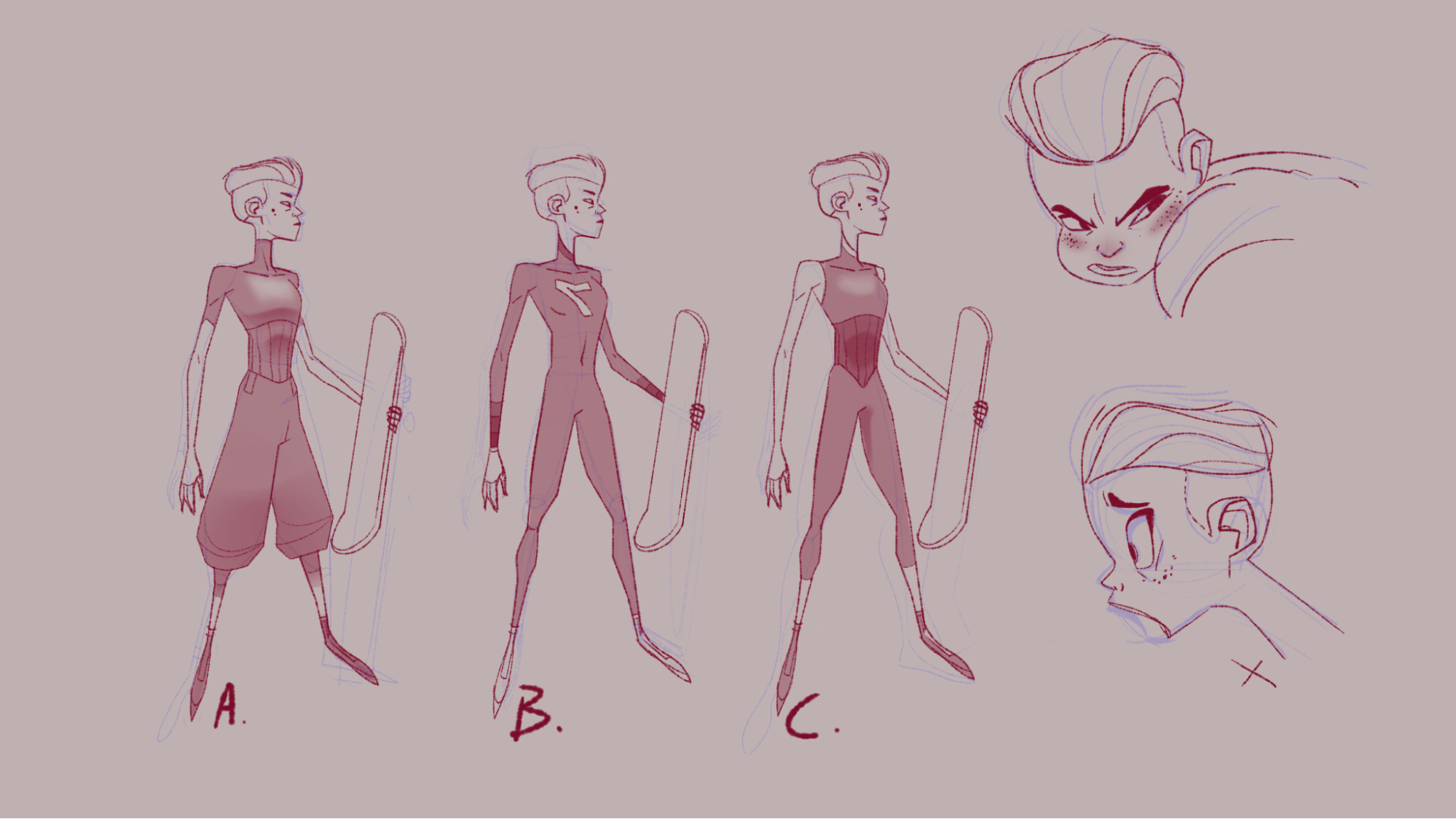
Did you learn anything from the production? And was there anything new that you wanted to try?
Plante: I’d never scored something before. I’ve never gotten to write music on top of something, and it was way harder than I ever would have thought. I had a very rough track at first, and I think people were being nice when they said, “it sounds awesome.” It didn’t. It sounded like garbage. But it was enough to keep the tempo. Once that was set in place, I knew exactly when the scenes were going to cut. It was very simple.
Tsandilis: I could try more things on the pre-production level, storyboarding and story flow. It’s something that wasn’t necessarily available to us because we are, for the most part, a service studio. Now we’re breaking out of that and we’re creating our own shows like Hilda. But for the most part, it’s somebody else coming to us with their idea.
For Duke’s Game, we basically had a blank check to do whatever we wanted. We really took that to heart and did exactly what we wanted for the short. It was just so refreshing and so exciting to work on a project that had true creative freedom. That was a huge opportunity for everyone here and I’m so happy we had a chance to be part of it.
Interested in seeing more behind-the-scenes material from Duke’s Game? Learn more about the production on Toon Boom’s blog.
Ready to shred through your animated scenes? Artists can download a 21-day free trial of Harmony Premium.

.png)
